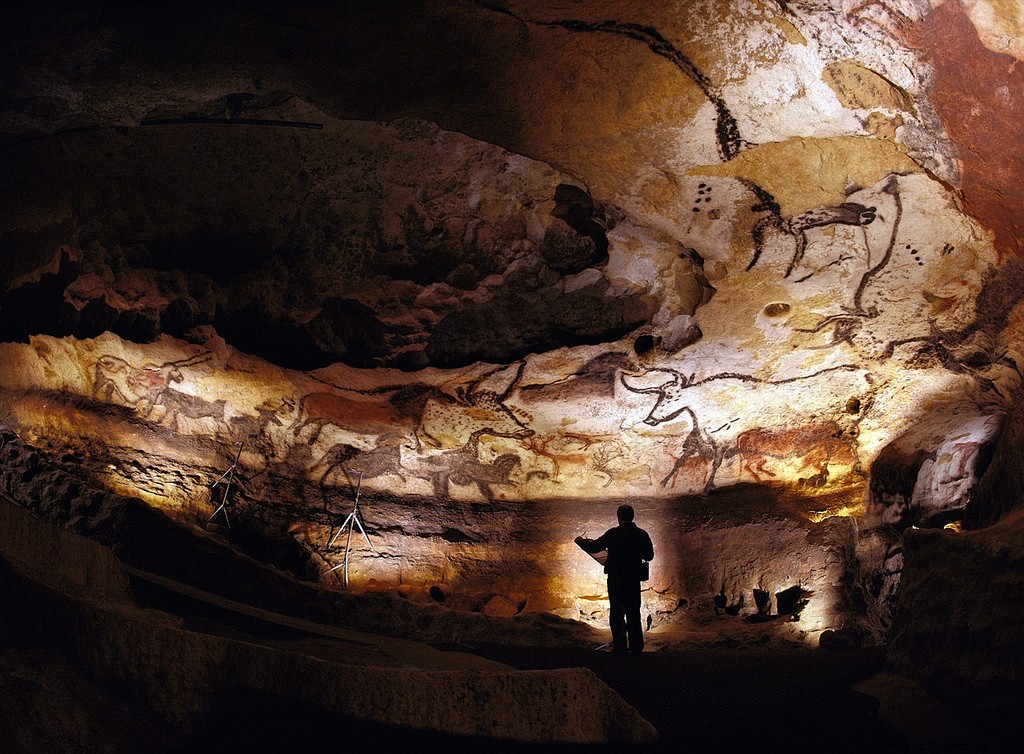In 1940, World War II raged. In June, France has just suffered a defeat. The Germans occupied the northern part and, in the south, it was now Pétain, with the Vichy regime, who governed. De Gaulle calls for the Resistance. This is why archaeological excavations are not relevant.
1940

Characters
Georges Agniel
Henri Breuil
Simon Coencas
Georges Estreguil
Leon Laval
Jacques Marsal
Marcel Ravidat
Procedure
On September 8, 1940, a teenager, Marcel Ravidat, accompanied by five comrades, walks with his dog, Robot, in the countryside around Montignac, in the Dordogne; but the animal, which is chasing a rabbit, suddenly disappears. While looking for him, he discovers that Robot has fallen into a hole that seems huge to him, 1.50 m deep and one meter wide in diameter. He immediately warns his comrades who are following him. Thinking of having discovered the underground which leads to the castle of Lascaux, they decide to return there. On September 12, Marcel leaves to explore the place. His other comrades work or don't want to come. Along the way, he meets Jacques Marsal, Georges Agniel and Simon Coencas who, intrigued, accompany him. There, for an hour, they enlarge the cavity with a knife. When the passage is wide enough, Marcel Ravidat sinks first. After having covered several meters on his stomach, he gets up and invites his comrades to follow him. They all find themselves in the cave when Jacques points to the murals… Nothing had prepared them for such a discovery. Dozens and dozens of painted animals, aurochs, bulls, horses, run on the walls! In shock, they decide to come back the next day to contemplate their treasure again in better light. They then talk about it to their former teacher Léon Laval. This last doubt and it is only when another comrade, an excellent draftsman, Georges Estreguil, shows him the sketches of the representations present in the cave, that he leaves to visit the site. Stunned by the discovery, he warns Abbé Breuil, a specialist in prehistory... who immediately realizes the capital importance of the discovery! Nicknamed the cave “the Sistine Chapel of the Perigordian”, or “Versailles of Prehistory”, he dates the cave paintings to around 18,000 BC. Vichy, in December 1940, classed the Lascaux cave as a historical monument.
Consequences
The discovery of this Sistine Chapel of parietal art in September 1940, while France was at war, did not have the expected success. However, from 1948, as soon as it opened to the public, the enthusiasm was prodigious. The crowd is difficult to contain. So much so that the cave deteriorates... On April 18, 1963, André Malraux, then Minister of Culture, decided to close the cave to preserve it. Another was created identically, Lascaux II, and opened to the public twenty years later. In 1979, the cave was listed as a UNESCO World Heritage Site.
